Data serves as the backbone of modern business success, enabling organizations to make informed decisions and drive growth. However, traditional business intelligence (BI) processes often create bottlenecks, slowing progress and limiting access to critical insights. Self-Service BI emerges as a transformative solution, democratizing data access and simplifying analytics. By empowering employees across all levels to independently explore, analyze, and utilize data, Self-Service BI fosters a culture of efficiency and proactivity. Teams can quickly uncover actionable insights, respond to challenges, and identify opportunities without relying on IT or data specialists. This streamlined approach not only enhances productivity but also supports more agile and informed decision-making. In this blog, we delve into how Self-Service BI is revolutionizing organizational workflows, enabling businesses to maximize their data’s potential and achieve seamless, data-driven processes.
Understanding BI Self-Service Reporting for Efficiency
BI Self-Service Reporting streamlines data access, empowering organizations with timely, actionable insights.
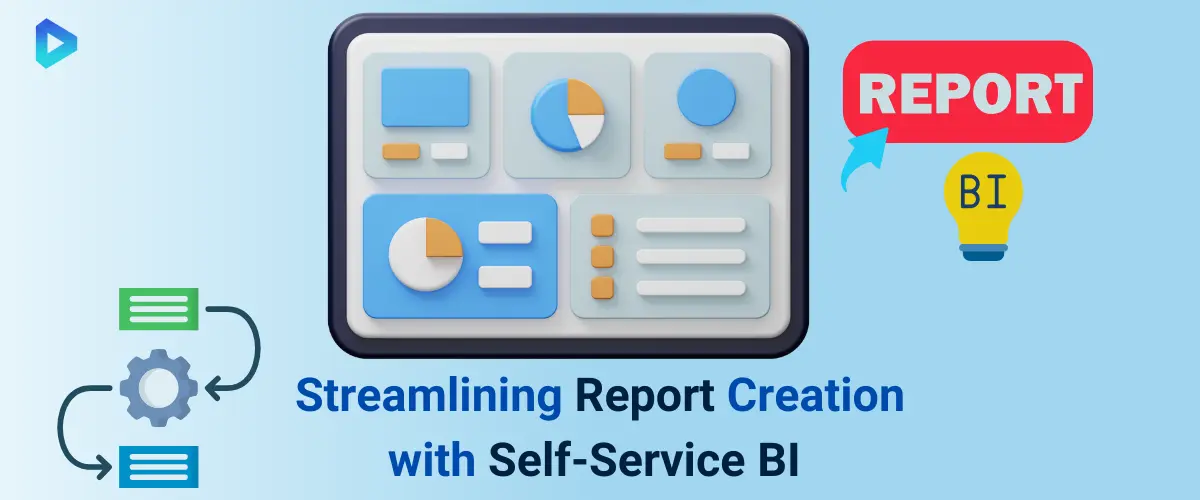
How BI Self-Service Reporting Simplifies Data Access
BI Self-Service Reporting provides non-technical users with seamless access to organizational data. Teams can independently retrieve, filter, and analyze information without relying on IT professionals. This streamlined access shortens response times, enabling quicker decision-making. By reducing bottlenecks, businesses achieve higher efficiency and agility. Organizations can use intuitive dashboards and drag-and-drop interfaces to explore complex datasets with ease. These tools encourage collaboration and improve transparency by centralizing data sources for consistency. Overall, BI Self-Service Reporting democratizes data access, making insights available across all organizational levels.
Key Features of BI Self-Service Reporting Tools
Modern BI Self-Service Reporting tools come equipped with user-friendly features that enhance usability and functionality. Dynamic dashboards let users tailor reports to meet their unique requirements. Real-time data synchronization ensures accuracy, enabling teams to act on the latest information. Visual elements such as graphs, charts, and heatmaps simplify data interpretation, making complex insights comprehensible. Integration capabilities with other business tools ensure a seamless workflow. Advanced filtering options and search functionalities let users pinpoint data quickly. These features collectively improve accessibility, saving time and effort while promoting data-driven culture across businesses.
Benefits of Self-Service Reporting for Decision-Making
Self-Service Reporting drives informed decision-making by providing immediate access to relevant data. It eliminates delays associated with traditional reporting methods, empowering users to identify trends and anomalies in real-time. Decision-makers can customize and tailor reports to suit specific scenarios, ensuring that insights align with strategic objectives. This adaptability fosters proactive management and enhances responsiveness to market changes. By fostering a data-driven culture, organizations improve collaboration and achieve better alignment between departments. The overall result is enhanced organizational efficiency and competitive advantage through smarter, faster decisions.
Choosing the Right Self-Service BI Platform
Selecting a Self-Service BI Platform simplifies analytics, enabling better decisions and streamlined operations.
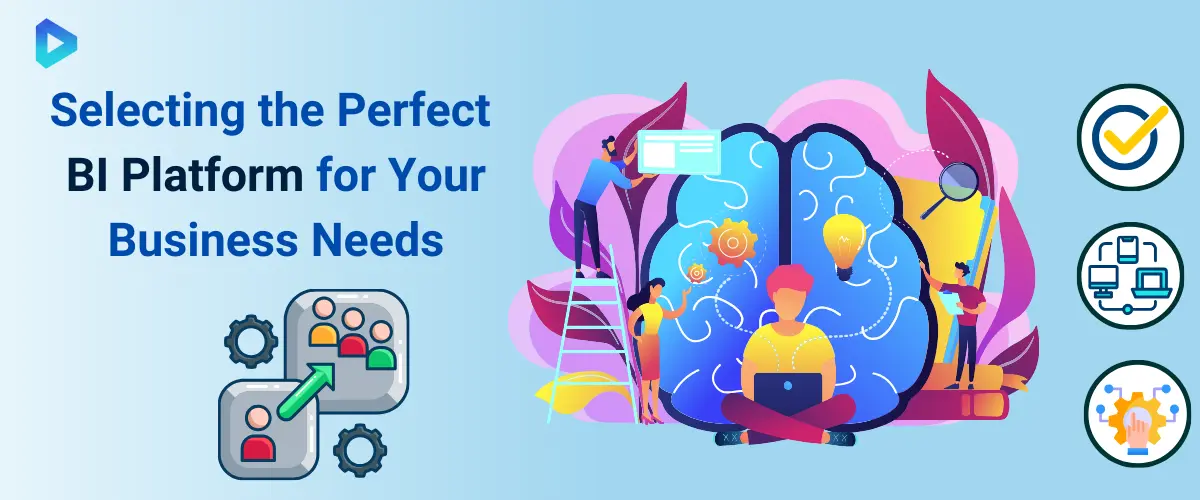
Features to Look for in BI Platforms
When evaluating BI platforms, focus on features that meet your business needs. A user-friendly interface is essential for empowering non-technical users. Look for interactive dashboards, customizable reports, and real-time data updates. Integration capabilities with existing systems like CRM and ERP ensure smooth workflows. Advanced data visualization tools such as charts, graphs, and heatmaps enhance comprehension. Security features like role-based access control safeguard sensitive data. The platform’s scalability allows it to expand alongside your business growth. Also, prioritize platforms offering robust support, including tutorials and customer service. By identifying these features, businesses can maximize the value of their chosen BI platform.
Popular Self-Service BI Platforms for Businesses
Several Self-Service BI platforms stand out for their features and usability. Tableau stands out for its cutting-edge visualizations and user-friendly design. Power BI offers seamless integration with Microsoft tools, making it ideal for Windows-centric organizations. Looker excels in delivering detailed insights through embedded analytics. Qlik Sense emphasizes interactivity and real-time collaboration. Zoho Analytics is a budget-friendly option with comprehensive reporting tools. Each platform caters to specific business needs, such as scalability, customization, or cost-effectiveness. By understanding the strengths of these platforms, organizations can choose one that aligns with their strategic goals.
Comparing Platforms for Small and Large Organizations
Small businesses and large organizations have distinct BI needs, influencing platform choices. For small businesses, affordability and ease of use are critical. Platforms like Zoho Analytics and Tableau Public offer cost-effective solutions with robust functionalities. Larger organizations prioritize scalability and integration with enterprise systems. Tools like Power BI and Looker are ideal for handling vast datasets and supporting multiple users. Evaluate the platform's capacity for real-time collaboration, as larger teams often require concurrent access. Small businesses benefit from simplicity, while larger enterprises need advanced customization options. Tailoring the platform to organizational size ensures optimal performance and ROI.
Enhancing Decision-Making with Self-Service BI Analytics
Self-Service BI Analytics empowers teams with real-time insights, improving decisions and operational efficiency.
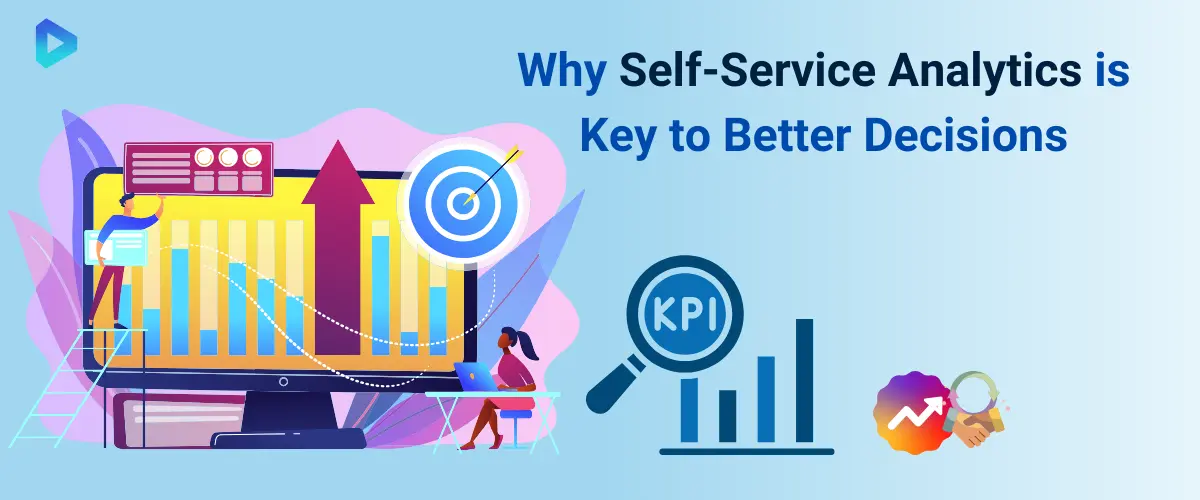
Advantages of Self-Service Analytics in Real-Time Insights
Self-Service Analytics offers significant advantages for real-time decision-making. Teams can access up-to-date data without waiting for IT support, enabling faster responses to market changes. Real-time dashboards allow stakeholders to visualize trends and anomalies instantly, improving situational awareness. Enhanced data transparency fosters collaboration, as teams can independently explore datasets. Predictive analytics, often integrated into these tools, guides proactive decision-making by forecasting outcomes. Additionally, the ability to customize reports ensures insights align with business objectives. By eliminating bottlenecks in data access, organizations can make informed decisions more quickly, ensuring they remain competitive in fast-paced industries.
How Analytics Drive Efficiency Across Teams
Self-Service BI Analytics enhances team efficiency by streamlining workflows. Marketing teams can optimize campaigns with instant performance metrics, while sales teams gain insights into customer behaviors. Operations benefit from analyzing supply chain data to identify inefficiencies. These tools democratize data, allowing all departments to generate actionable insights. Cross-functional teams can collaborate effectively using shared dashboards, aligning their goals and strategies. Automation of repetitive tasks like report generation frees up resources for strategic planning. By empowering teams with accessible analytics, organizations reduce downtime and foster a culture of data-driven decision-making, enhancing overall productivity.
Overcoming Challenges in Self-Service BI Analytics Adoption
While Self-Service BI Analytics offers numerous benefits, adoption challenges can arise. Resistance to change is common, as teams may hesitate to transition from traditional methods. Training is essential to ensure users can navigate the tools effectively. Data security concerns also need to be addressed, with robust protocols for access control and compliance. Organizations should avoid overwhelming teams with overly complex tools; selecting intuitive platforms minimizes friction. Scalability is another concern, as analytics solutions must adapt to growing datasets and users. By proactively addressing these challenges with training, security measures, and user-friendly tools, businesses can unlock the full potential of Self-Service BI Analytics.
Developing a Strong BI Self-Service Strategy
A robust BI Self-Service Strategy empowers teams and aligns analytics with organizational goals.
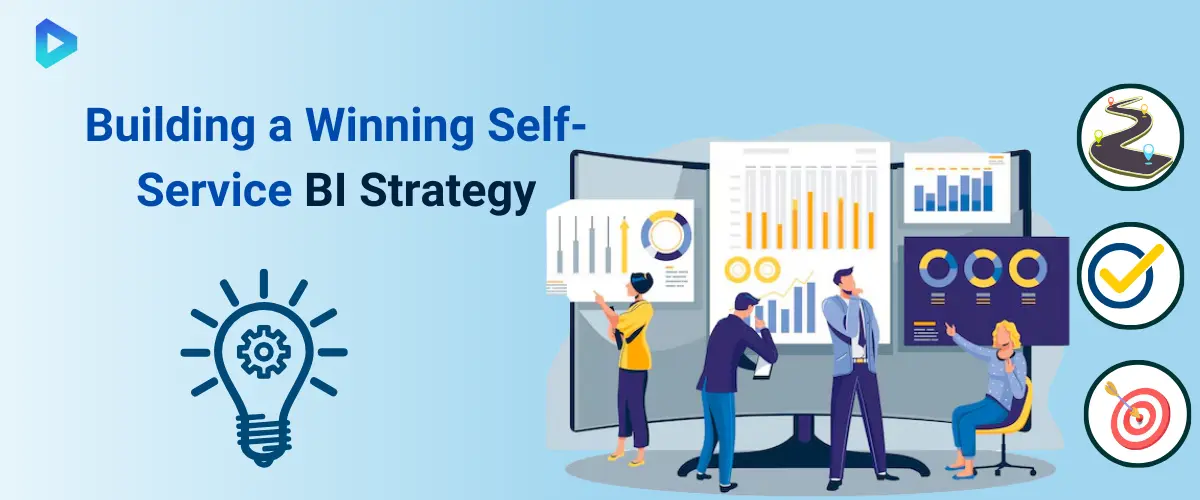
Steps to Build an Effective BI Strategy
Creating an effective BI Self-Service Strategy involves several critical steps. Begin by assessing current data processes to identify gaps and inefficiencies. Define clear objectives, such as improving decision-making speed or empowering teams with data access. Engage stakeholders from all departments to understand their specific data needs and use cases. Choose intuitive BI tools that align with organizational requirements and provide scalability. Establish governance frameworks to ensure data security, accuracy, and compliance. Provide comprehensive training programs to enhance user adoption and skill development. Monitor and refine the strategy regularly based on user feedback and evolving business needs. A structured approach ensures the strategy drives measurable improvements in operational efficiency and decision-making.
Aligning BI Strategy with Organizational Goals
To maximize the impact of a BI Self-Service Strategy, alignment with organizational goals is essential. Begin by identifying key performance indicators (KPIs) that reflect the company’s strategic priorities, such as revenue growth or customer retention. Ensure that the chosen BI tools and frameworks support these metrics through real-time data visualization and insights. Collaborate with leadership to integrate the strategy into broader business initiatives, fostering cross-departmental synergy. Regularly evaluate the effectiveness of BI systems against the organization’s goals and adjust the strategy as needed. Clear alignment ensures that data efforts contribute directly to measurable outcomes, driving business success.
Common Pitfalls to Avoid in BI Strategies
Avoiding common pitfalls is crucial for the success of a BI Self-Service Strategy. One frequent issue is neglecting to involve end-users during the planning phase, leading to poor adoption rates. Overcomplicating tools or processes can overwhelm teams, reducing their effectiveness. Insufficient training is another common challenge, as it leaves users unable to leverage BI tools fully. Data governance mistakes, such as inadequate security or unclear access protocols, can lead to compliance issues and data inaccuracies. Lastly, failing to monitor and adapt the strategy over time results in stagnation. By addressing these pitfalls, organizations can ensure their BI strategy remains effective and aligned with business objectives.
Exploring Advanced BI Self-Service Capabilities
Advanced BI Self-Service capabilities empower businesses to optimize processes and make informed decisions efficiently.
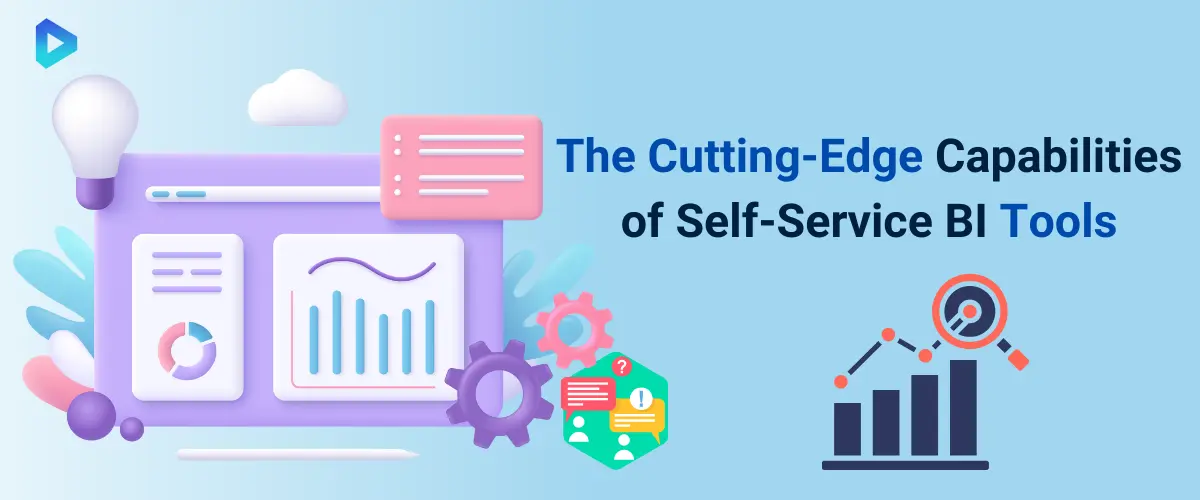
Key Capabilities That Streamline Organizational Processes
Advanced BI Self-Service solutions offer capabilities that transform organizational efficiency. Intuitive dashboards enable users to access data without technical expertise. Real-time reporting provides up-to-the-minute insights, reducing delays in decision-making. Customizable visualizations allow teams to tailor data presentations to specific needs, ensuring relevance. AI-driven analytics highlight patterns and trends, uncovering opportunities for growth. Automated alerts notify stakeholders about critical changes, fostering proactive responses. Collaboration tools integrate BI into workflows, enabling team discussions based on shared data insights. These features simplify complex processes, democratize data access, and empower organizations to act swiftly and strategically.
Real-World Applications of BI Self-Service Capabilities
Organizations leverage BI Self-Service capabilities across industries to improve outcomes. In retail, real-time dashboards track inventory, optimizing stock levels and reducing waste. Healthcare providers utilize advanced analytics to identify patient care trends and improve treatment protocols. Manufacturing firms monitor production metrics, enhancing quality control and efficiency. Marketing teams analyze campaign performance through customizable reports, refining strategies for better ROI. Finance departments rely on self-service tools for accurate forecasting and compliance reporting. These examples highlight the versatility of BI capabilities in solving diverse challenges, fostering agility, and supporting data-driven success.
Driving Efficiency with Advanced BI Features
Advanced BI features revolutionize efficiency across businesses. Predictive analytics forecast outcomes, enabling proactive planning and resource allocation. Natural language processing (NLP) simplifies querying by allowing users to interact with data conversationally. Integration with other software platforms streamlines workflows, reducing manual effort. Data governance tools ensure secure and accurate access, building trust in insights. Self-service automation minimizes reliance on IT, freeing up resources for strategic initiatives. By embracing these advanced features, organizations improve productivity, reduce costs, and maintain a competitive edge in data-driven environments.
Transforming Operations Through Self-Service Business Models
Self-Service business models redefine operational efficiency, enabling agility and fostering data-driven decisions.
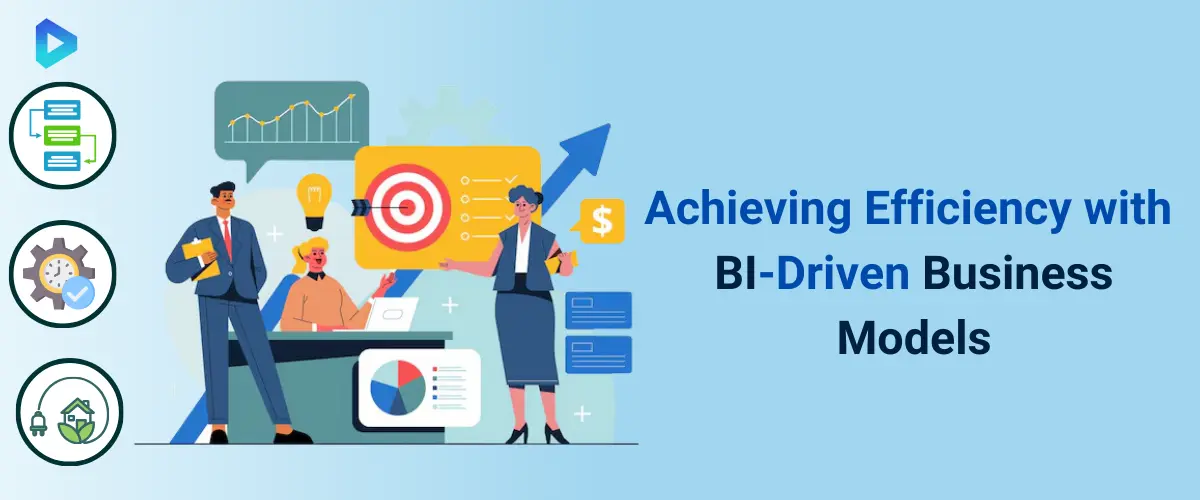
How Self-Service Models Improve Business Agility
Self-service models empower businesses to adapt swiftly in dynamic environments. By decentralizing data access, these models reduce dependency on IT departments, enabling teams to retrieve insights independently. Agility is enhanced as decision-makers can quickly analyze trends and respond to market changes. Automated dashboards present real-time data, eliminating delays and fostering proactive strategies. Collaboration improves as team members can share customized reports, aligning efforts seamlessly. With reduced manual processes, operational bottlenecks are minimized, increasing overall productivity. Businesses adopting self-service models gain a competitive edge by streamlining operations, enhancing flexibility, and making well-informed decisions faster.
Integrating Self-Service BI with Current Workflows
Integrating self-service BI into existing workflows boosts efficiency without overhauling established systems. Tools like intuitive dashboards blend seamlessly into daily operations, making data easily accessible for all departments. Integration with CRM, ERP, and other software ensures a unified data ecosystem, enhancing collaboration. By embedding BI tools within workflows, teams can analyze performance metrics without disrupting routines. Automation of repetitive reporting tasks frees up time for strategic planning. Training programs familiarize staff with BI features, ensuring a smooth transition. Such integration ensures that organizations capitalize on self-service benefits while maintaining workflow continuity.
Leveraging Self-Service for Long-Term Organizational Growth
Self-service models drive sustainable growth by fostering a culture of data-driven decision-making. Real-time insights help businesses quickly spot opportunities and take action. Enhanced collaboration through shared data access promotes innovation and cross-departmental synergy. Predictive analytics inform long-term strategies, helping organizations anticipate trends and prepare for future challenges. Scalability of self-service solutions supports growth without significant additional investments. As employees become more adept at leveraging data, organizational efficiency and productivity increase. By aligning self-service capabilities with strategic goals, businesses position themselves for sustained success in a competitive landscape.
Ensuring Success with Self-Service BI Governance
Effective BI governance ensures security, accessibility, and streamlined operations for self-service analytics adoption.
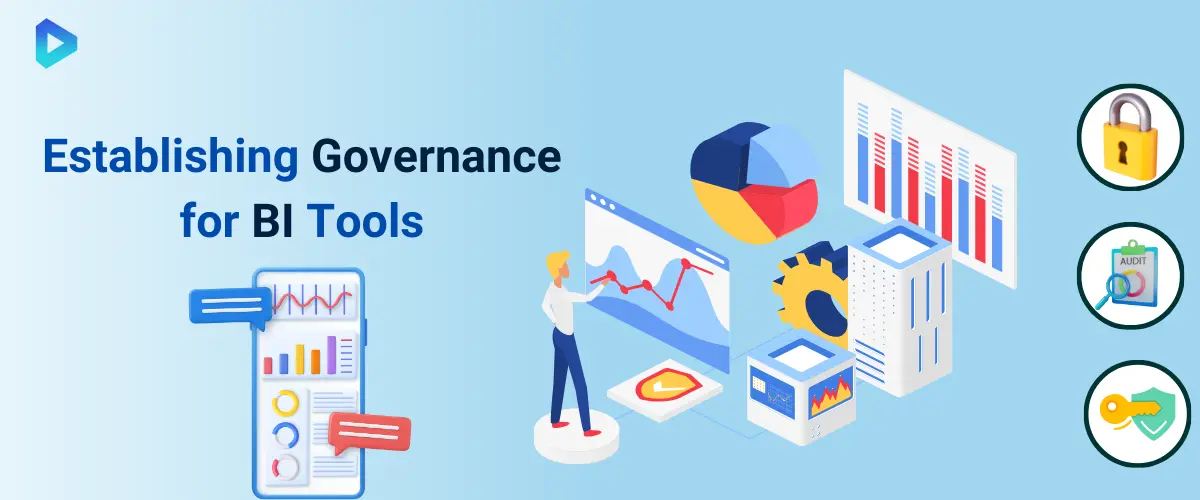
Why Governance Is Crucial for Self-Service BI Adoption
Governance ensures a structured approach to self-service BI, balancing accessibility and data security. Without governance, teams may face inconsistencies in data reporting, leading to inaccuracies in decision-making. A robust governance framework standardizes data usage, promoting trust in the insights derived. Governance also ensures compliance with data regulations, protecting sensitive information from breaches. By defining clear roles, responsibilities, and protocols, organizations prevent misuse and streamline BI adoption. With proper oversight, self-service BI can empower users to explore data freely while maintaining organizational standards. Governance bridges the gap between flexibility and control, fostering efficient and secure BI practices.
Best Practices for Establishing BI Governance Policies
Creating effective governance policies involves establishing clear guidelines for data usage and access. Begin by defining roles and responsibilities for data management to ensure accountability. Standardize data sources and ensure all teams work from consistent datasets to avoid discrepancies. Implement training programs to educate users on governance protocols and the importance of compliance. Regularly monitor data usage and update policies to align with evolving business needs and regulations. Use tools that support centralized data management and automate compliance checks. By prioritizing transparency and communication, organizations can build trust and ensure adherence to governance policies.
Balancing Accessibility and Security in BI Governance
BI governance must strike a balance between granting data accessibility and ensuring security. Role-based access controls allow teams to retrieve relevant data without exposing sensitive information. Encryption and secure authentication protocols further safeguard data integrity. Governance policies should promote a culture of responsibility, ensuring users understand their data access limitations. Regular audits help identify vulnerabilities and strengthen security measures without hampering workflow. Tools that provide both access transparency and robust protection ensure governance is effective. Striking this balance enhances user autonomy while protecting critical assets, fostering confidence in self-service BI solutions.





No comments:
Post a Comment